In this blog, I will share how lines shape interior design and transform spaces. Lines are more than just boundaries; they create structure, balance, and movement. Understanding how to use them effectively helps you design spaces that feel open, inviting, or dynamic.
Lines guide the eye through a room, highlighting key elements like furniture, artwork, or architectural features. They influence how large or small a space appears. Whether you want to add height, width, or energy, lines help achieve the desired effect.
Mastering lines in design isn’t just about aesthetics; its about functionality. The right placement of horizontal, vertical, diagonal, or curved lines enhances flow and organization. I will break down how different types of lines impact interior design and how you can use them to elevate your space.
The Types of Lines and How They Influence Design
Horizontal Lines
Horizontal lines create a sense of calm and stability in a room. They help spaces feel grounded and balanced. When used effectively, they can make an area appear wider and more open. This makes them ideal for small rooms that need visual expansion.
You can find horizontal lines in furniture, shelves, and paneling. A long, low sofa or a wide dining table can emphasize the width of a space. Using horizontal wall treatments like shiplap or wainscoting adds depth and texture. These elements help create a relaxed and inviting atmosphere.
Flooring also plays a role in reinforcing horizontal lines. Wide planks or tiles laid lengthwise can extend the perceived space. If you want a cozy and spacious feel, incorporate horizontal elements strategically.
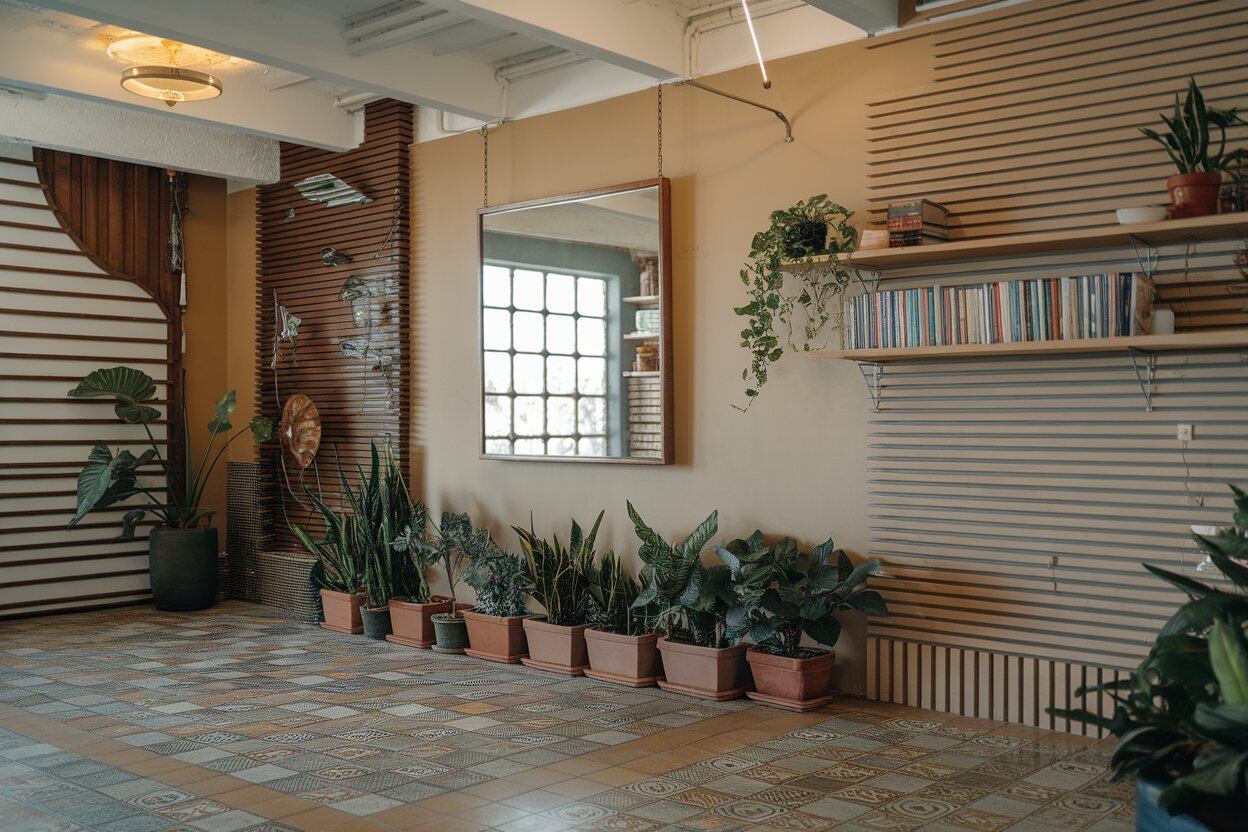
Vertical Lines
Vertical lines draw the eye upward, making ceilings seem higher. They create a sense of elegance and formality. If a room feels cramped, adding vertical elements can give it an airier, more open look.
You can introduce vertical lines through tall bookshelves, floor-to-ceiling curtains, or vertical paneling. These features add structure and sophistication to a space. Even small details like vertical stripes on wallpaper can enhance height perception.
In architectural design, vertical columns or moldings reinforce a rooms grandeur. If you want to emphasize height and create a refined aesthetic, use vertical elements as focal points.
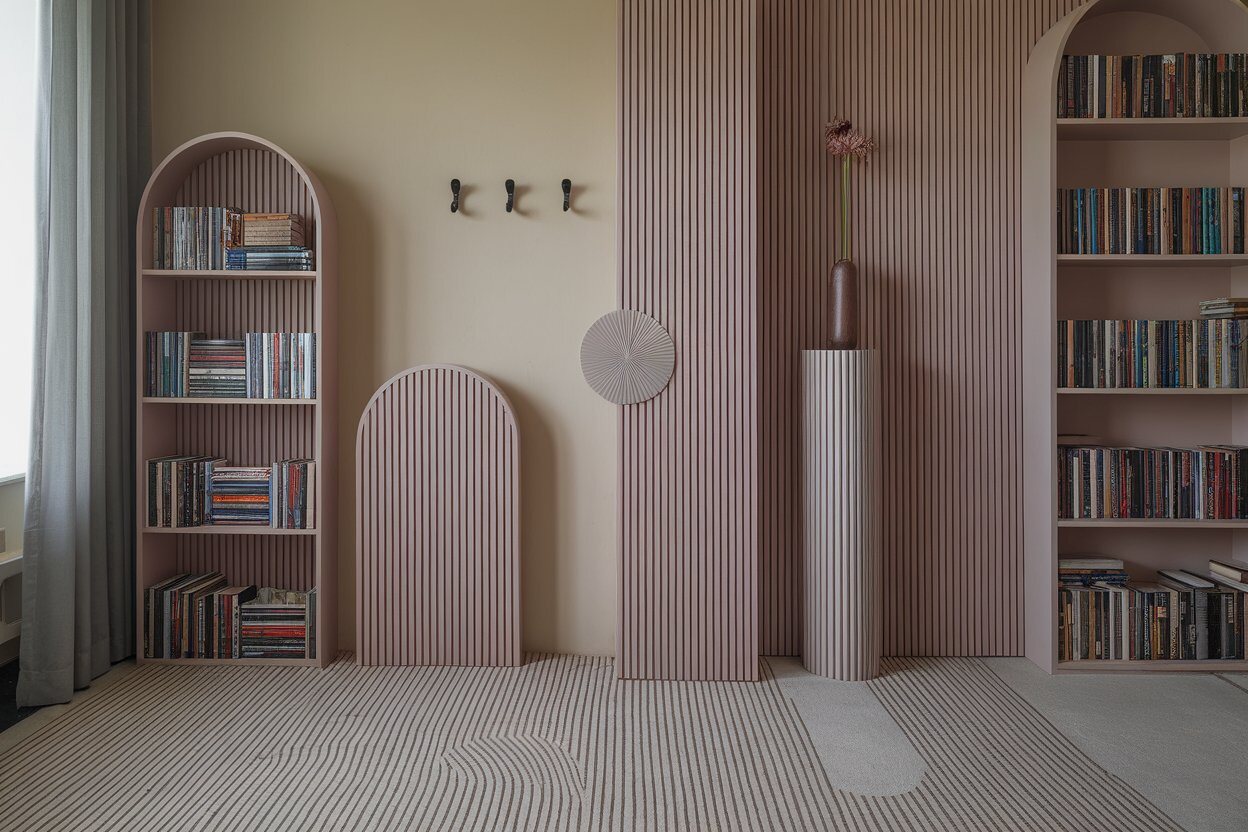
Diagonal & Zig-Zag Lines
Diagonal lines introduce movement and excitement. They break up static layouts and add a dynamic touch. When used in moderation, they create a sense of action and energy in a space.
Staircases, feature walls, and tile patterns often incorporate diagonal lines. Chevron and herringbone flooring are popular choices for a modern look. These patterns guide the eye naturally, making spaces feel more engaging.
Zig-zag lines, like those found in chevron designs, add a playful and trendy element. They work well in rugs, cushions, and accent pieces. If you want a bold statement, use zig-zag patterns in focal areas.
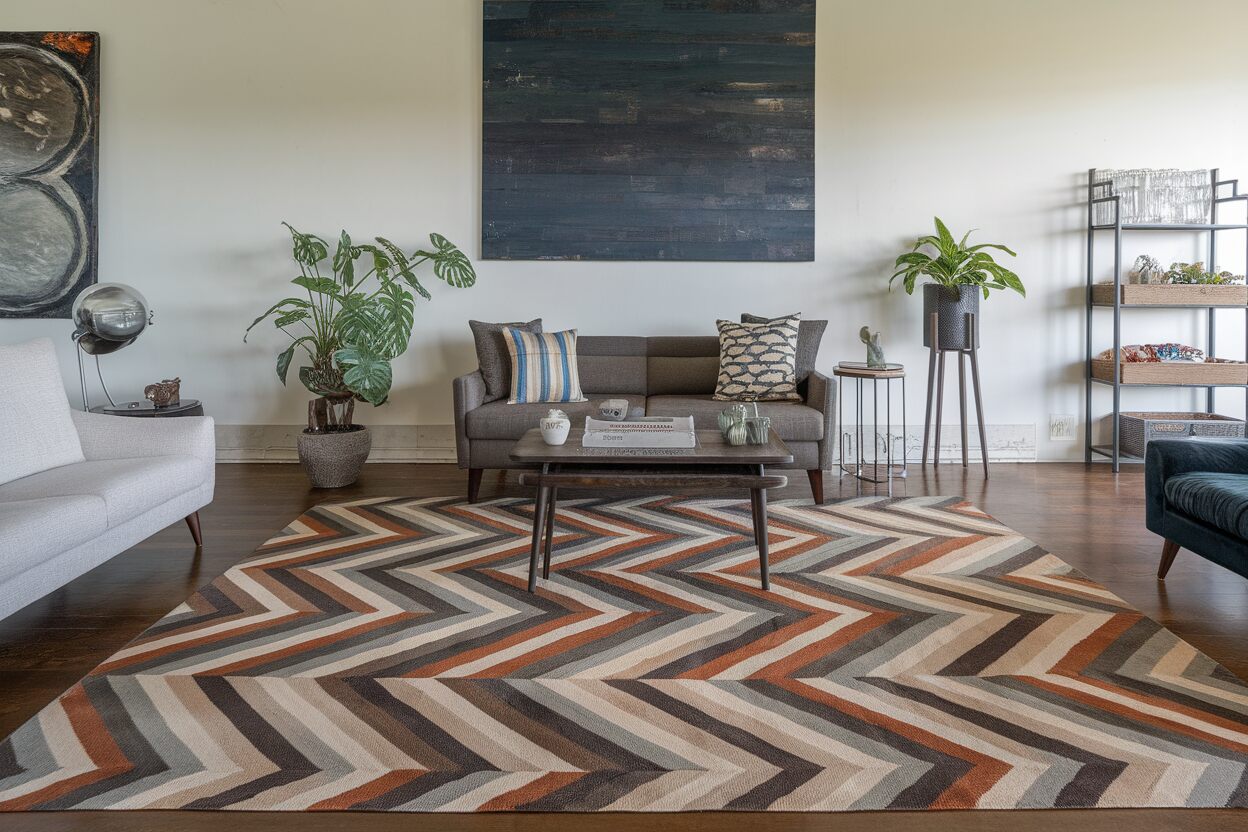
Curved & Circular Lines
Curved lines create a smooth, flowing feel in interior design. They contrast with rigid straight lines, bringing balance and movement to a space. Curved elements make a room feel more inviting and harmonious.
Round furniture, arched doorways, and circular mirrors soften harsh edges. A curved sofa or a round coffee table can make a space feel more relaxed and comfortable. These elements encourage a natural, easy flow.
Curves work well in both modern and traditional interiors. Whether in wall details, furniture, or decorative pieces, they add warmth and elegance. If you want to soften the look of your space, introduce curved lines strategically.
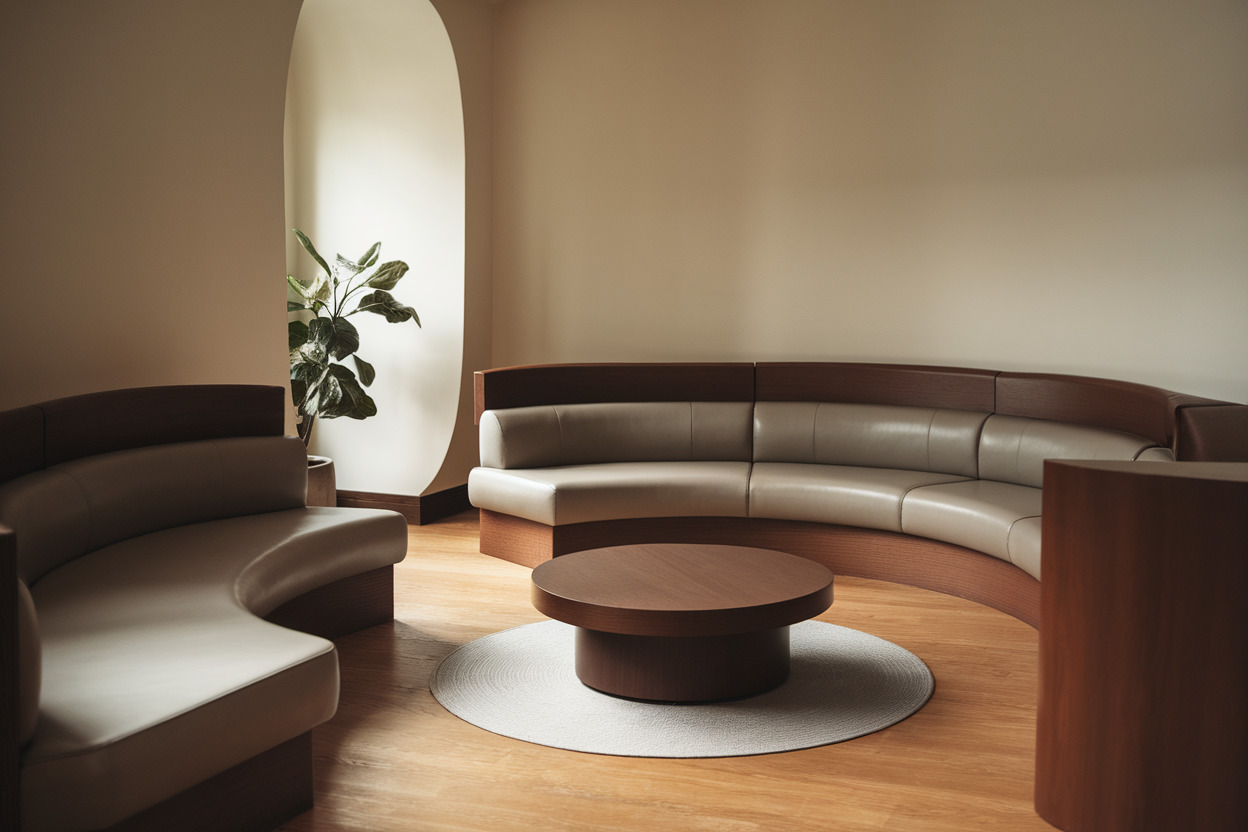
How Lines Shape Your Space?
Directing Attention & Creating Focal Points
Lines naturally guide the eye. They help you focus on key areas in a room. A well-placed line can highlight a statement wall, an artwork, or a piece of furniture.
Architectural details, like molding or beams, can frame a space. A vertical panel behind a bed draws attention to it as a focal point. Horizontal lines in shelving can lead the eye across a room.
Even subtle lines in decor can create emphasis. A rugs pattern can point toward a coffee table. Light fixtures aligned in a row can draw focus to a dining area. You can use lines intentionally to enhance design impact.
Defining Spaces & Zones
Lines are essential in open layouts. They help define different areas without using walls. Strategic placement of furniture, rugs, or ceiling beams can create a sense of structure.
A large area rug can separate a living room from a dining space. Ceiling beams or lighting can establish boundaries in a multifunctional room. Even a row of plants or a console table can serve as a visual divider.
Furniture placement also plays a role. You can add a sofa positioned in the middle of a room can mark the start of a lounge area. Bookshelves can divide workspaces from relaxation zones. Lines help organize a space while keeping it open and cohesive.
Manipulating Space Perception
Lines can change how a room feels. Vertical lines make a space seem taller. Horizontal lines stretch a room, making it look wider.
A tall bookshelf or vertical paneling can add perceived height to low ceilings. Floor-to-ceiling curtains enhance this effect. Horizontal stripes on walls or flooring can create a sense of spaciousness.
You can add diagonal lines can add depth and movement. Chevron flooring or angled furniture placement can shift the rooms visual energy. Thoughtful line use makes any space feel balanced and well-proportioned.
Bringing Lines to Life in Different Rooms
Living Room
A well-designed living room blends straight and curved lines. Straight lines in furniture and shelving create structure, while curved elements soften the space. This mix ensures a balanced and inviting atmosphere.
Linear rugs, framed artwork, and structured furniture help guide movement. A rectangular coffee table contrasts beautifully with a round mirror or a curved armchair. These elements work together to create a visually dynamic space.
Even small details make an impact. A striped throw on a sofa can add direction, while arched lamps introduce a softer feel. Thoughtfully combining lines creates harmony in the living room.
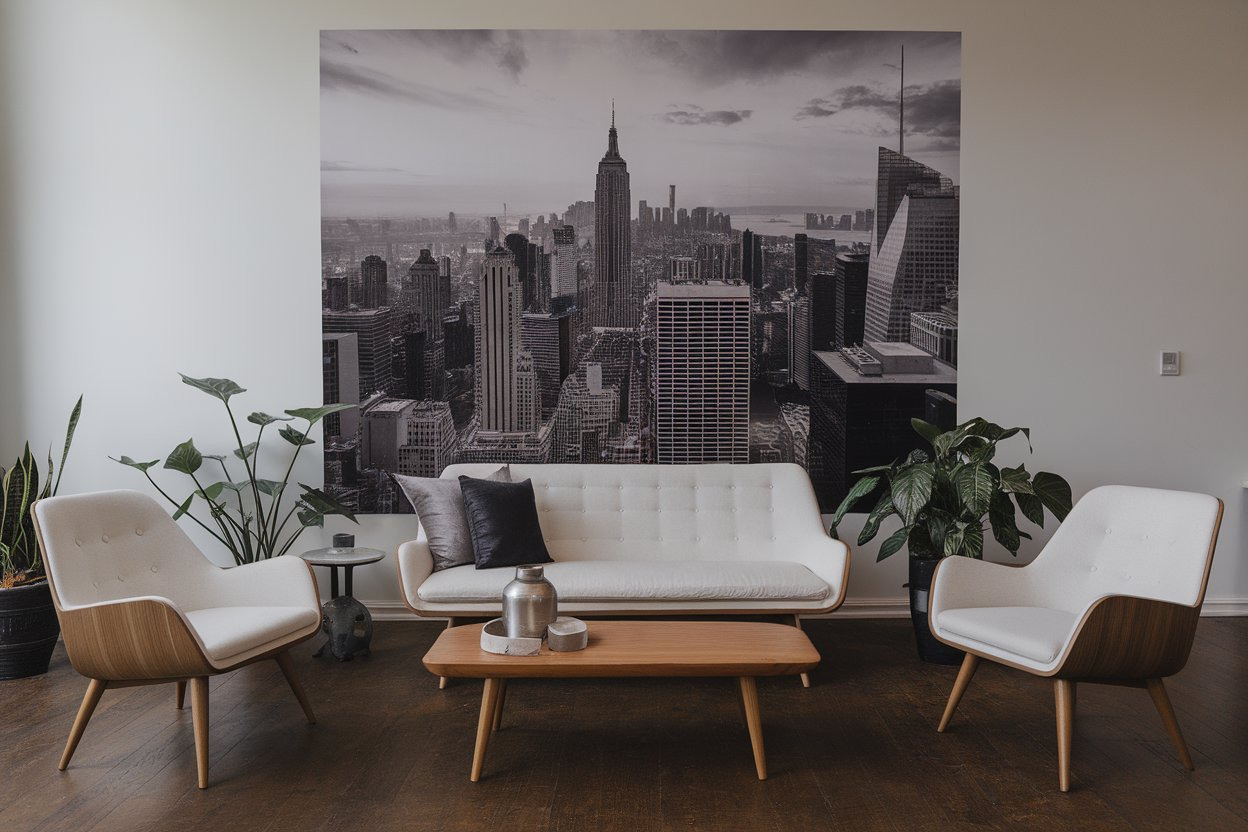
Kitchen
Lines in a kitchen define structure and efficiency. Cabinets, shelving, and tiled backsplashes introduce horizontal and vertical elements that improve organization.
Horizontal counters create a sense of width, making kitchens feel more open. Vertical cabinet lines and tall pantry doors add height, balancing the space. Combining these elements ensures both function and style.
You can add details like a herringbone backsplash or a row of pendant lights add subtle visual interest. Whether designing a compact kitchen or a spacious one, using lines smartly enhances both practicality and aesthetics.
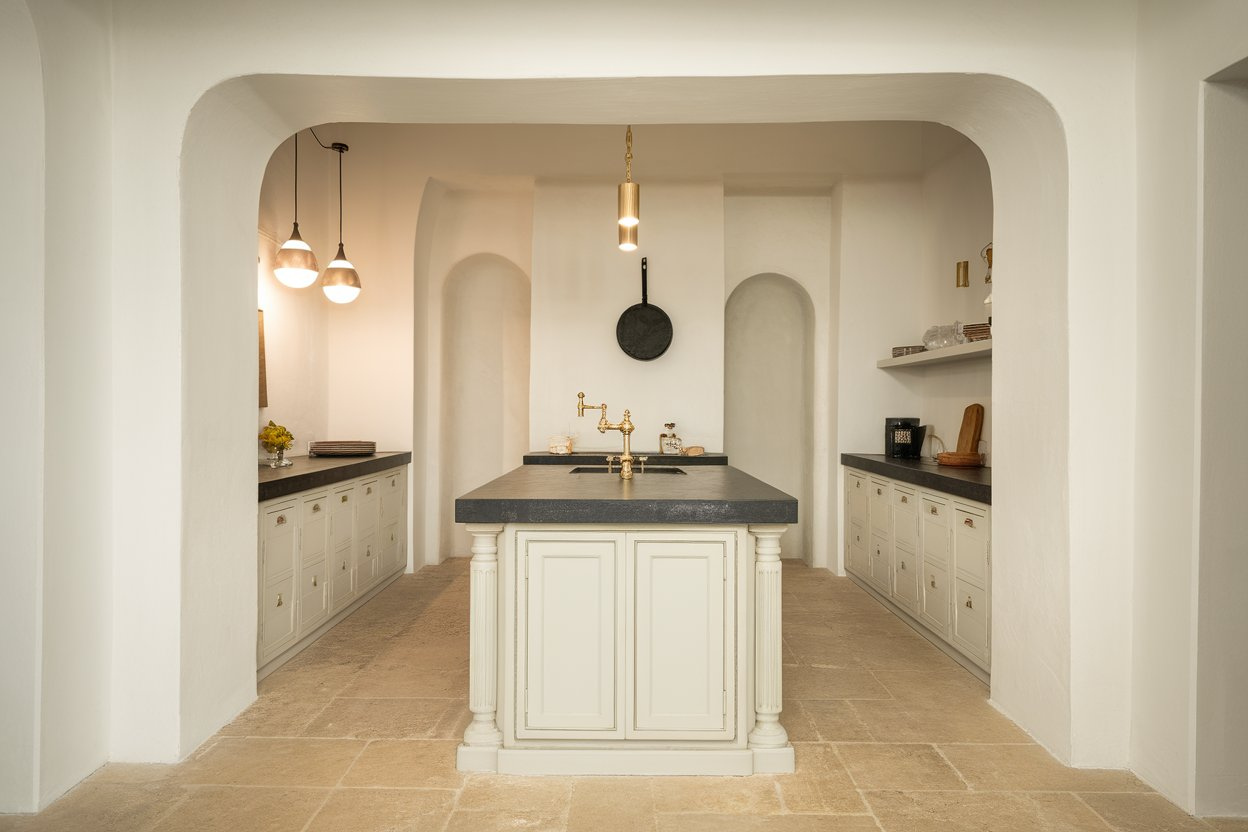
Bedroom
The bedroom should feel restful and refined. Vertical paneling behind the bed draws the eye upward, making the space feel taller and more elegant.
You can add curved elements, like a rounded headboard or circular nightstands, soften the room. They contrast with straight furniture lines, creating a cozy and welcoming feel.
Small accents also matter. A rug with flowing patterns or arched mirrors can enhance the space without overwhelming it. A thoughtful balance of lines creates a relaxing bedroom retreat.
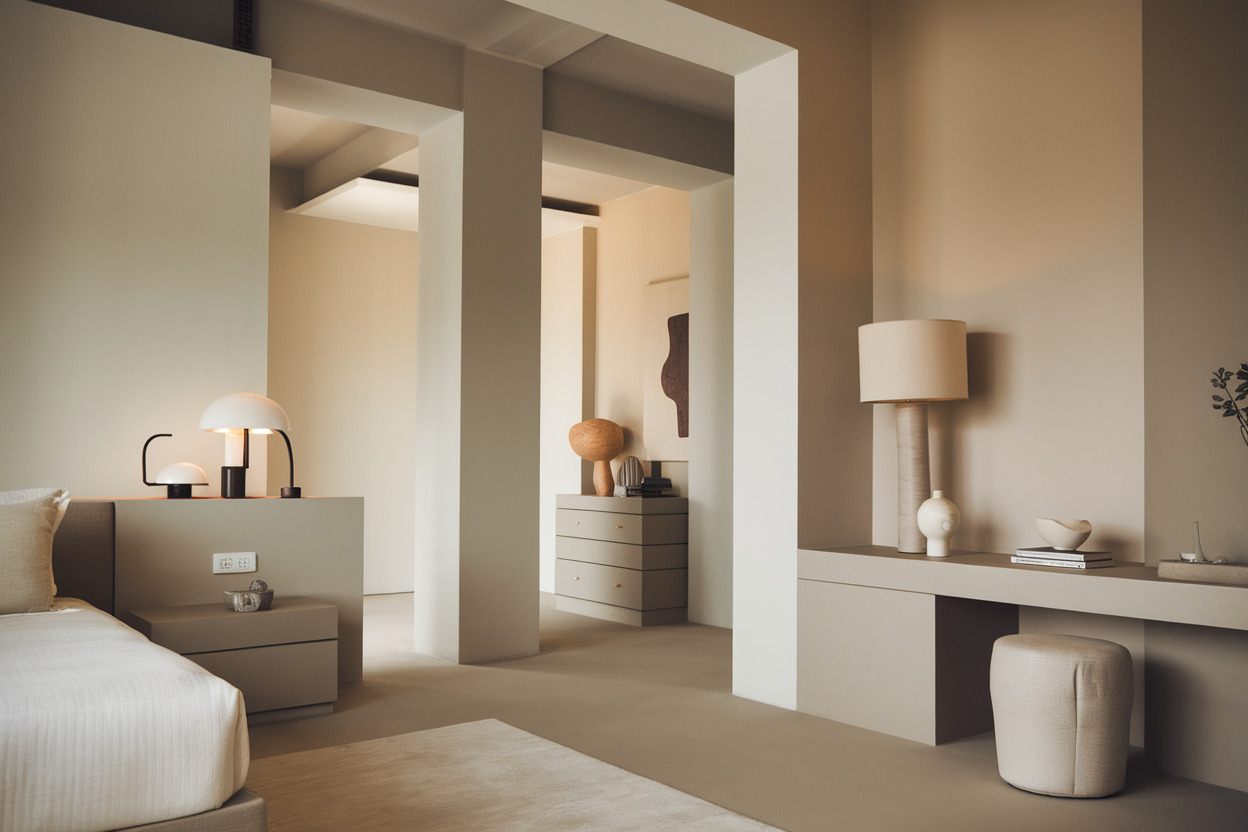
Bathroom
Bathrooms often have limited space, making line placement essential. Vertical tiles make walls appear taller, helping small bathrooms feel more open.
You can add curved mirrors, circular sinks, and rounded fixtures soften the rigid structure. These elements add visual variety and prevent the space from feeling boxy.
Even accessories contribute to balance. A striped bath mat, curved towel hooks, or a rounded shower door can subtly enhance the design. Using lines effectively transforms any bathroom into a well-proportioned space.
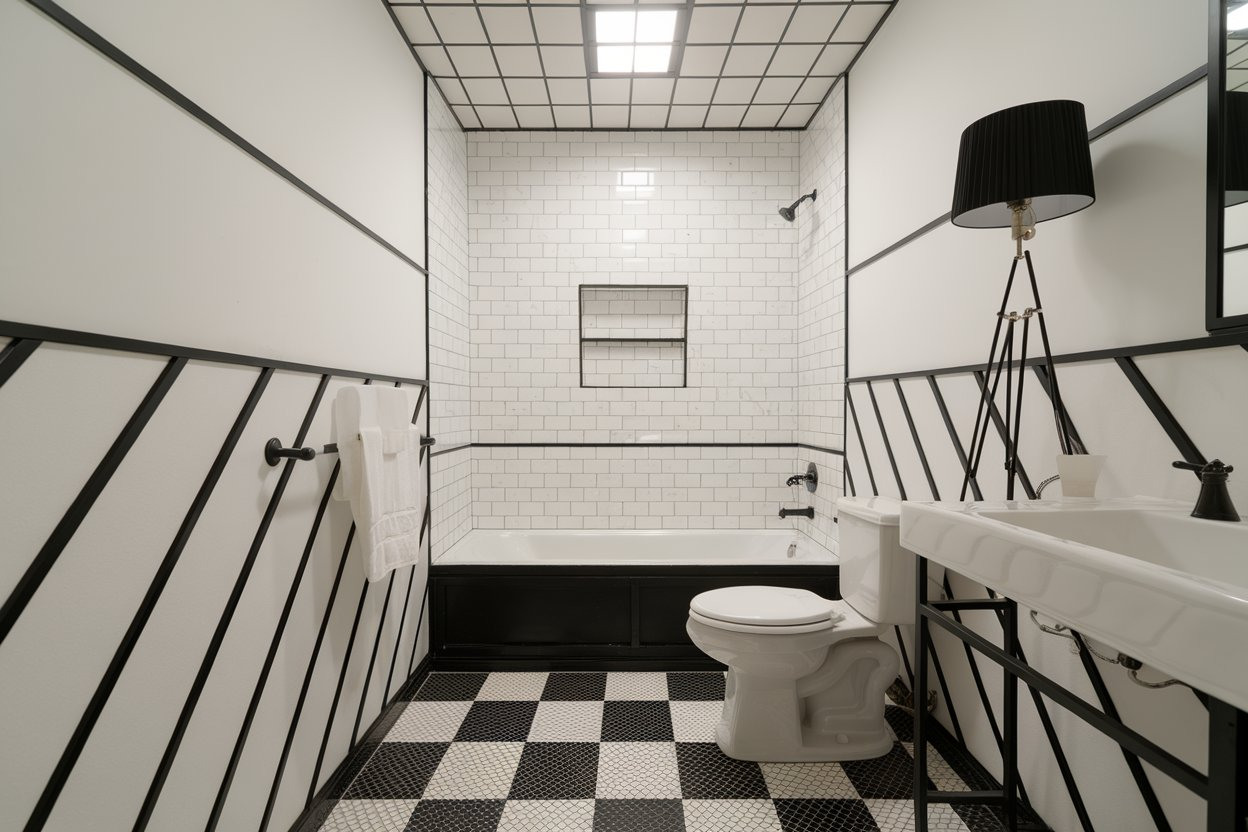
Mastering the Art of Line for a Cohesive Interior Design
Lines shape how a space looks and feels. Using only one type can make a room feel too rigid or chaotic. A mix of straight, curved, and dynamic lines keeps the design visually interesting and balanced.
You can pair structured lines with softer curves to create contrast. A sleek, modern sofa with straight edges feels more inviting when combined with a round coffee table. Vertical paneling on a wall pairs well with an arched mirror to add depth and variation.
You can try horizontal stripes on a rug to widen a room or a bold zig-zag pattern in cushions to add energy. Thoughtful combinations bring harmony, making your space feel stylish and intentional.
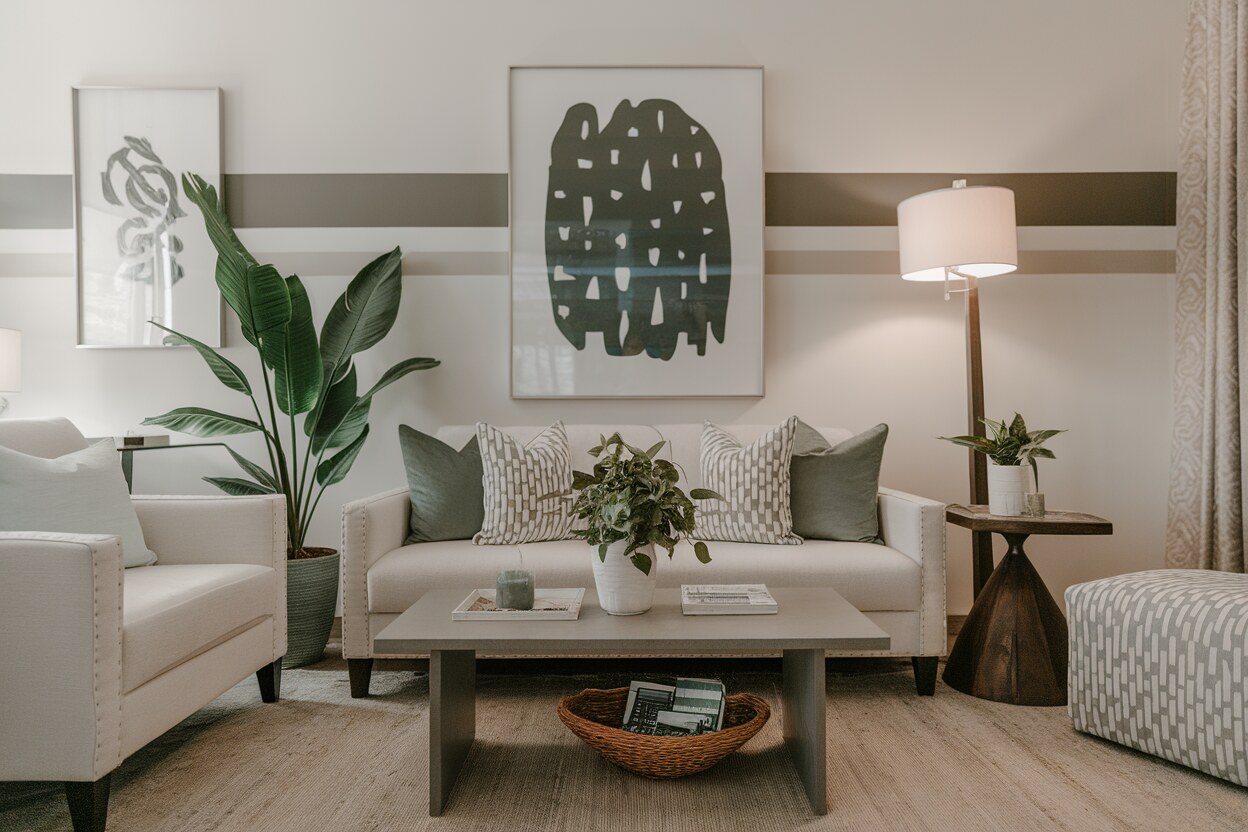
FAQs:
1. What is the role of line in interior design?
Lines define shape, guide the eye, and create structure in a space. They influence perception, balance, and flow, helping interiors feel organized, dynamic, or relaxing. Whether horizontal, vertical, diagonal, or curved, lines play a crucial role in shaping aesthetics and functionality in interior design.
2. How do horizontal and vertical lines affect a room?
Horizontal lines make spaces feel wider, stable, and calming, while vertical lines create height, elegance, and formality. Horizontal lines work well for furniture and wall treatments, while vertical lines enhance tall elements like curtains and paneling. Together, they establish balance and structure in a room.
3. How do diagonal and zig-zag lines impact interior design?
Diagonal and zig-zag lines add energy, excitement, and movement to a space. They are commonly used in accent walls, staircases, and patterned decor like chevron rugs. When used strategically, they create a bold, dynamic effect, but overuse can make a room feel chaotic.
4. What do curved and circular lines represent in design?
Curved and circular lines create a soft, flowing, and inviting atmosphere. They balance rigid structures, making a space feel more comfortable and natural. Common in arched doorways, round furniture, and decorative elements, curved lines enhance harmony and movement in interiors.
5. How can I use lines to make a small room feel larger?
Use vertical lines to add height and horizontal lines to expand width. Light-colored striped wallpaper, tall mirrors, or floor-to-ceiling curtains help elongate a space. Avoid too many diagonal or zig-zag patterns, as they can overwhelm small rooms and make them feel cluttered.
6. How do lines create focal points in a room?
Lines guide the eye toward specific elements like a fireplace, artwork, or feature wall. Using vertical paneling, a statement rug, or contrasting colors can highlight key areas. Structured furniture arrangements and architectural details also help create intentional focal points.
7. What’s the best way to balance different line types in interior design?
Mix straight and curved lines for a harmonious look. Too many straight lines can feel rigid, while excessive curves can seem overly playful. Use vertical and horizontal lines for structure, then introduce curved or diagonal elements in decor, furniture, or patterns to add softness and movement.
Conclusion:
Lines do more than outline a space they influence perception, movement, and balance. They guide the eye, create structure, and enhance the overall aesthetic. Understanding their impact helps you design with intention.
Whether you prefer clean, structured lines or gentle, flowing curves, the right combination brings harmony. Thoughtful use of lines can make a room feel spacious, cozy, or dynamic.
Start exploring different line styles in your home. Small changes, like a patterned rug or vertical paneling, can transform your space with ease.

